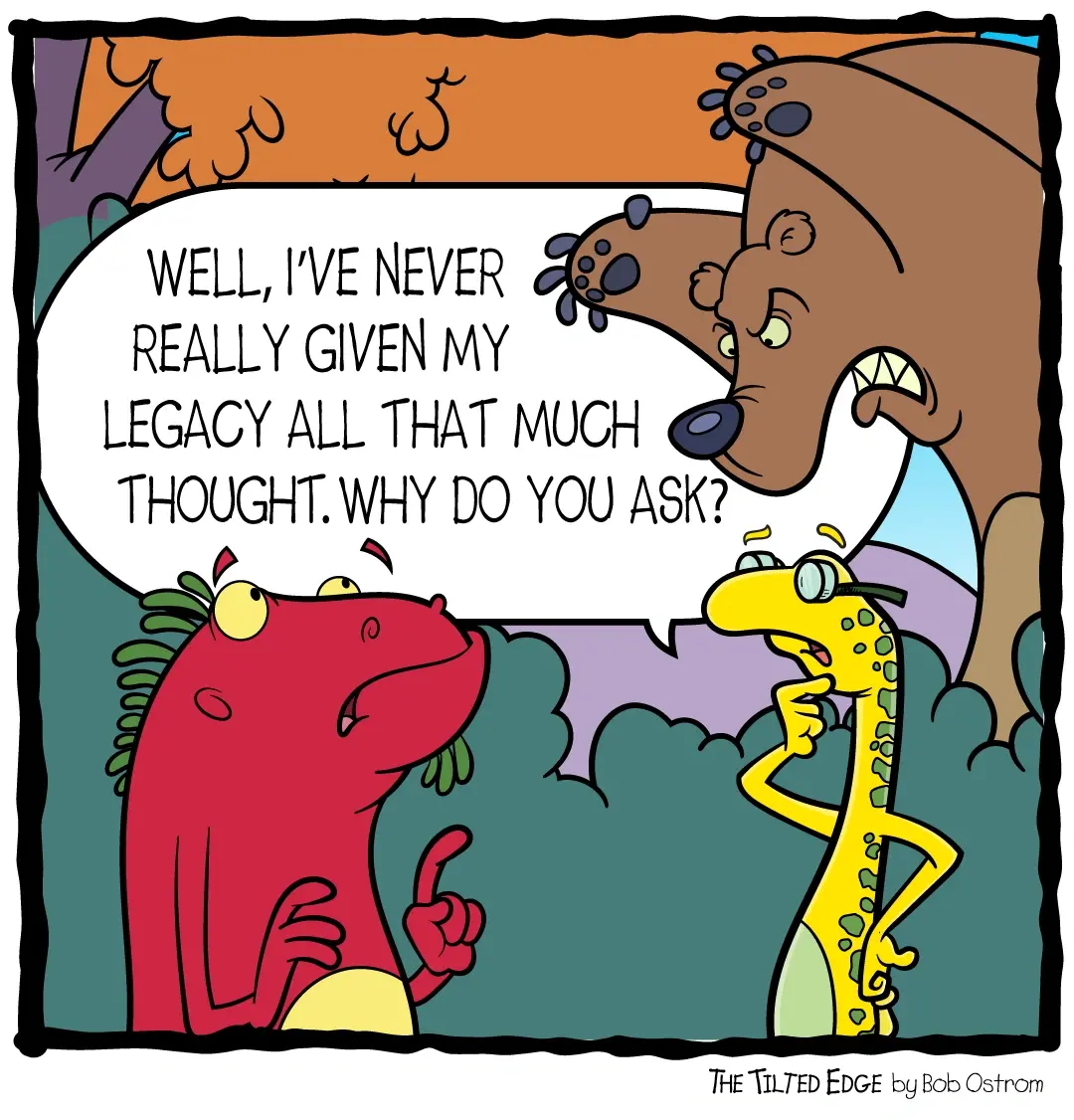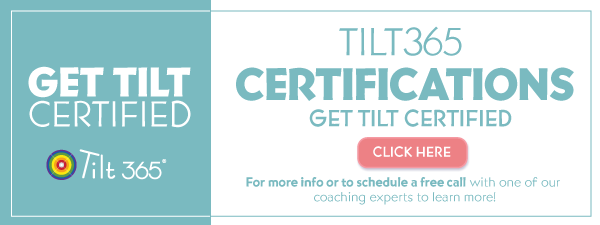The Relationship Between Growth Mindset, Generativity, and Thriving


In this post, I discuss the relationships between a growth mindset, generativity, and thriving. I will first begin by defining and examining the relationship between a growth mindset and generativity. Then, I will discuss how these two relate to thriving and how Tilt365 can help increase these qualities in individuals and organizations.
Relationship Between Growth Mindset and Generativity
To begin, a growth mindset and the concept of generativity are two psychological frameworks that share some similarities but primarily focus on different aspects of human development and behavior.
-
Growth Mindset: A growth mindset, as developed by psychologist Carol Dweck, refers to the belief that one's abilities and intelligence can be developed and improved over time through dedication, effort, and learning. People with a growth mindset view challenges and failures as opportunities to learn and grow. They embrace continuous effort and see setbacks as only temporary, which can be overcome through persistence and learning from their mistakes. This mindset fosters resilience, adaptability, and a willingness to take on new challenges.
-
Generativity: Generativity is a concept introduced by psychologist Erik Erikson, as one of the stages of psychosocial development across the human lifespan. Generativity typically occurs during adulthood, particularly in middle adulthood. Nevertheless, based on Tilt’s research, anyone (regardless of age) can experience a generative state–which is the ultimate goal. Meaning that it is less about personal needs and preferences (reducing ego and attachments to identity and personality) and more about becoming balanced and achieving wholeness, allowing the ability to serve others. This involves a concern for and commitment to guiding, nurturing, and leaving a positive legacy for the next generation by contributing to the well-being of society. Generative individuals often focus on activities such as mentoring, teaching, coaching, parenting, community involvement, and creating lasting contributions to their respective fields or communities.
The relationship between a growth mindset and generativity is related in several aspects. While these concepts are distinct, there are clear ways in which they relate. First, both underscore the significance of personal growth and development. A growth mindset hinges on the belief in one's potential for improvement, aligning with generativity's call for lifelong learning and progress. Additionally, individuals with a growth mindset are open to learning from new experiences, which is a pivotal trait of generativity that promotes continuous advancement.
Both concepts foster resilience, as those with a growth mindset rebound from setbacks, which is a crucial quality for navigating the challenges that come from pursuits of generativity. Adaptability is also a trait that is intrinsic to a growth mindset and complements the dynamic nature of generativity. Adaptability contributes to evolving societal needs in response to changing circumstances. The positive influence of a growth mindset on future generations parallels the goal of generativity of leaving a positive impact on society. In essence, while distinct, growth mindset and generativity are related to the themes of growth, development, learning, and positive contributions.
In essence, the presence of a growth mindset is what leads to a state of generativity.
How Growth Mindset and Generativity are Related to Thriving
Thriving refers to a state of sustained and successful growth, development, and overall positive performance of individuals and organizations. When an individual or organization is thriving, it is not merely surviving or maintaining its performance or operations, but it is actively excelling, expanding, and achieving its goals in a dynamic and competitive environment. Thus, as you can see, a growth mindset, generativity, and the concept of thriving are interconnected in that they all contribute to individuals' and organizations' overall well-being, development, and success. Here's how they relate:
-
Growth Mindset and Thriving: When individuals possess a growth mindset, they believe in their ability to learn, develop, and adapt. This mindset encourages people to embrace challenges, persist through setbacks, and continually seek opportunities for improvement. As a result, individuals with a growth mindset are more likely to thrive because they approach life with optimism, resilience, and a willingness to learn and evolve. Their openness to learning and willingness to take on challenges contribute to their personal and professional growth, fostering a sense of accomplishment and well-being.
-
Generativity and Thriving: As previously stated, generativity involves a sense of purpose and a commitment to the well-being of future generations and society. Engaging in generative activities, such as mentoring, coaching, teaching, philanthropy, and community involvement, can contribute to individuals' sense of fulfillment, meaning, and thus thriving. This is because when people feel that they are making a positive impact on the world and leaving a lasting legacy, they are more likely to experience a sense of purpose and well-being that contributes to the state of thriving.
-
Collective Impact on Organizational Thriving: Both growth mindset and generativity have implications for organizational thriving. In a workplace where a growth mindset is encouraged, employees are more likely to collaborate, innovate, and take ownership of their roles. This leads to higher engagement, increased creativity, and enhanced problem-solving capabilities within the organization, all of which contribute to the state of thriving. Similarly, a workplace that promotes generativity by fostering mentorship, coaching, knowledge-sharing, and community involvement can create a positive organizational culture that attracts and retains talent, enhances reputation, and contributes to organizations thriving in the long-term.
-
Personal Growth and Thriving: When individuals experience personal growth through a growth mindset and generative activities, they often report greater overall well-being and a sense of thriving. Personal growth brings about a sense of accomplishment, self-efficacy, and satisfaction, all of which contribute to an individual's feeling of thriving in various aspects of life.
How Tilt Enhances Growth Mindset, Generativity, and Thriving
In essence, a growth mindset and generativity provide individuals and organizations with the tools and attitudes necessary for thriving. By fostering personal and professional development, contributing to the well-being of others, and embracing change and challenges, individuals and organizations can create environments that support thriving in both personal and collective contexts. A great way to do this is by leveraging personality assessments that are designed to help people expand beyond a single personality type to achieve agility. Nevertheless, traditional personality assessments, like MBTI and DISC, type individuals and 'leave them in a box'. They promote the now-disproven notion that people's personalities do not change.
Tilt's assessments, on the other hand, are designed around the notion that not only does personality change in individuals, but it can be trained to be adaptive to changing work-life contexts. This is what is known as having a generative personality, which is agile and shifts from one set of traits to another with ease and grace. By leveraging Tilt's personality assessments, like the True Tile Personality Profile™, people can determine what their personality preference is so as to uncover areas of weakness that can be improved upon. Tilt assessments show how people can grow beyond their personality preference by balancing character strengths and actively building skills to become more comfortable with the less developed part of themselves. Therefore, organizations seeking to enhance growth mindsets, generativity, and thriving should avoid outdated profiling tests and instead leverage assessments designed to evolve individual and team behaviors toward agility.
Stay tuned for next week’s post, where I will dive deeper into discussing the impact of a growth mindset, generativity, and thriving on organizations, employees, and leaders!



